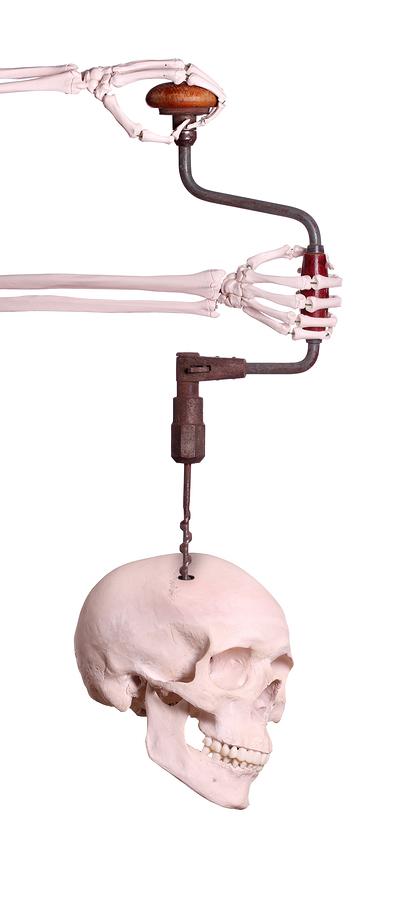 Although it sounds extreme, bone drilling is sometimes a necessary part of orthopedic surgery. This is most common when a person suffers a fracture and it has to be treated with a direct approach. This means that plates, wires and immobilization screws have to be used inside the body. The drill itself is an electric device that is used by the surgeon to create holes in bones. Other common reasons for drilling bones in surgery are fixing implants and fitting prosthetic devices. The bone drill is sometimes referred to as a saw and certain types can also be used manually although this is less common at the present time.
Although it sounds extreme, bone drilling is sometimes a necessary part of orthopedic surgery. This is most common when a person suffers a fracture and it has to be treated with a direct approach. This means that plates, wires and immobilization screws have to be used inside the body. The drill itself is an electric device that is used by the surgeon to create holes in bones. Other common reasons for drilling bones in surgery are fixing implants and fitting prosthetic devices. The bone drill is sometimes referred to as a saw and certain types can also be used manually although this is less common at the present time.
Through extensive research experts have determined that the best orthopedic drill is one that has a split point and a quick helix. It is important to cause as little thermal damage as possible when drilling through bone and this is a prime consideration during the design process. If the area around a drill hole experiences a dramatic rise in temperature than this can negatively affect the healing process and even cause permanent damage. Infection is another risk factor and it is known that blunt drill bits are often the culprit for this temperature increase occurring. The angle at which the drill is applied is also an essential consideration of this type of orthopedic surgery.
There is near constant discussion as to how bone drills can be improved to increase safety and efficiency. It seems that the biggest problem to address is the presence of blunt instruments in the operating theatre. Not only do they cause the aforementioned heightened thermal heat but it also requires more pressure for penetration. This is dangerous because tissue damage can be caused if the drill goes too far by accident. The extra force necessary to operate with blunt drill bits can also lead to the drill bits becoming broken and can even put the surgeon at risk of minor injury.
There is no conclusive agreement on the absolute best practice for orthopedic bone drilling and it is likely that different surgeons that you encounter will have their own preferred methods. This does not mean that any one way is definitively better than the other but that individuals have come to their own conclusions through extensive practice. When a surgery of this kind is required, your orthopedic surgeon will discuss the approach they feel is best suited to your injury and you will be able to ask any relevant questions to put your mind at ease.
References
1) http://www.ncbi.nlm.nih.gov/pmc/articles/PMC3880511/
2) http://orthostreams.com/2015/09/how-cool-a-bone-drill-that-knows-where-it-is/
3) http://www.boneandjoint.org.uk/highwire/filestream/15710/field_highwire_article_pdf/0/357.full-text.pdf
Related Posts
Cigarettes May Inhibit Inflammation Treatments
Axial spondyloarthritis, also known as AxSpa, is a chronic…







